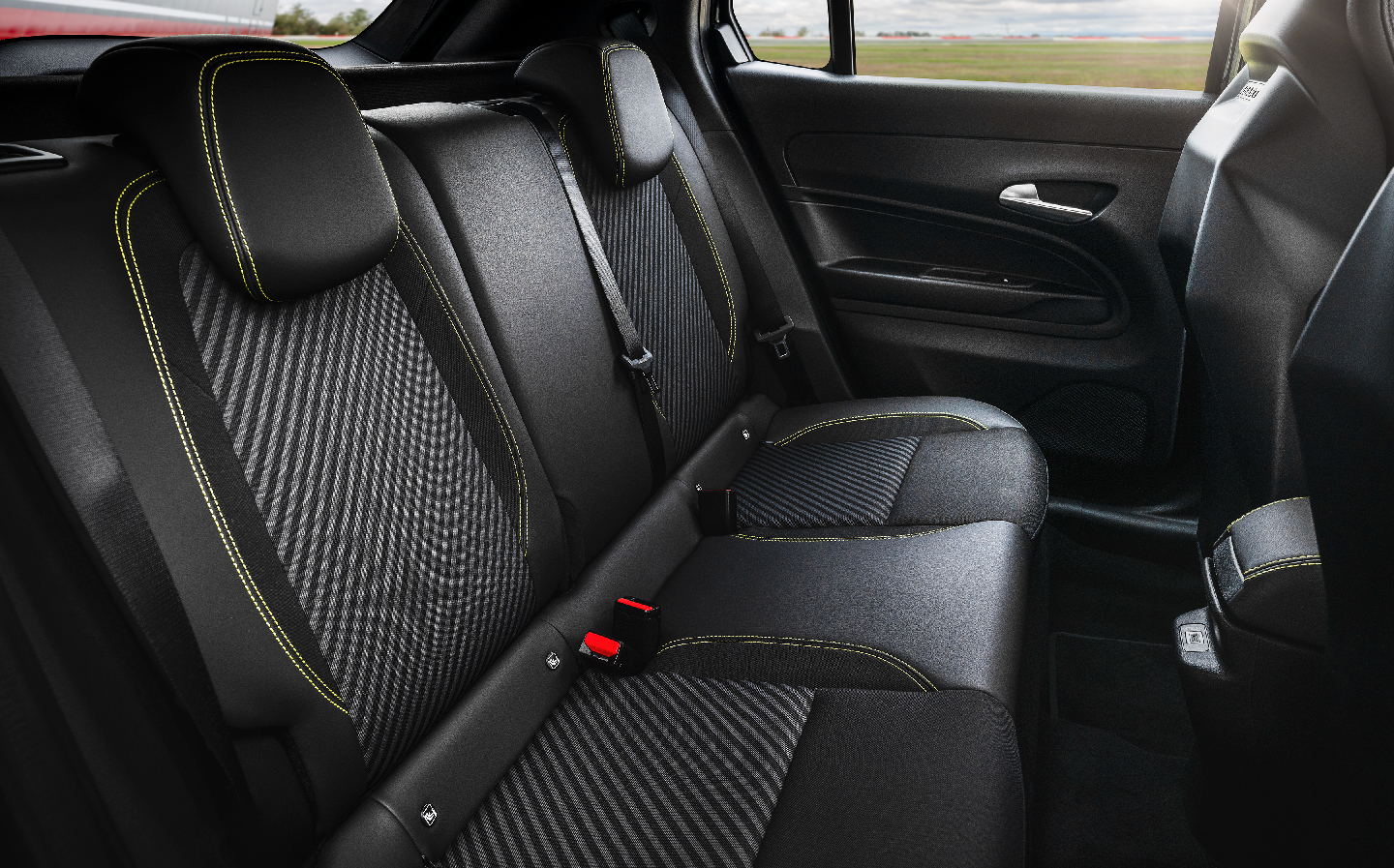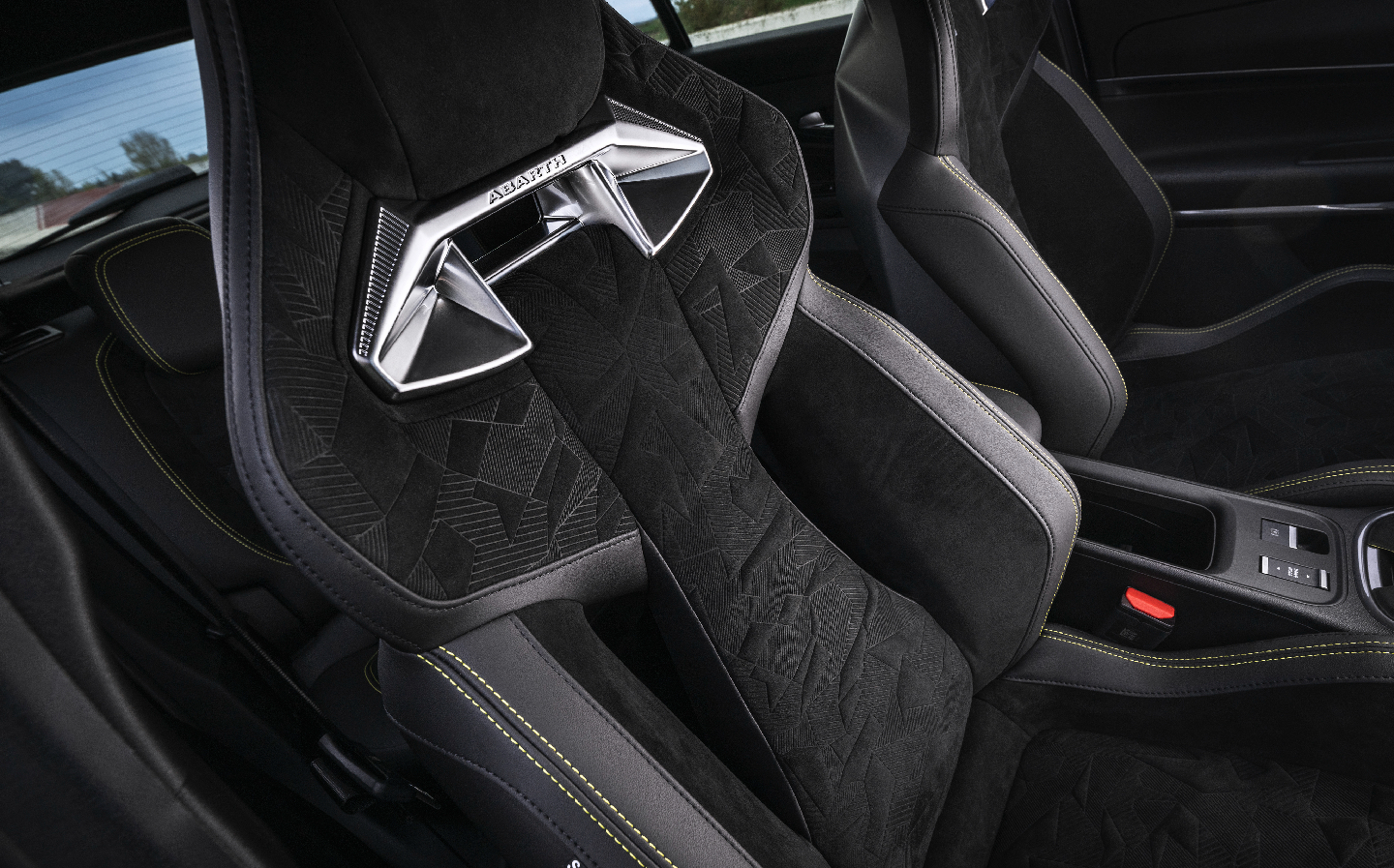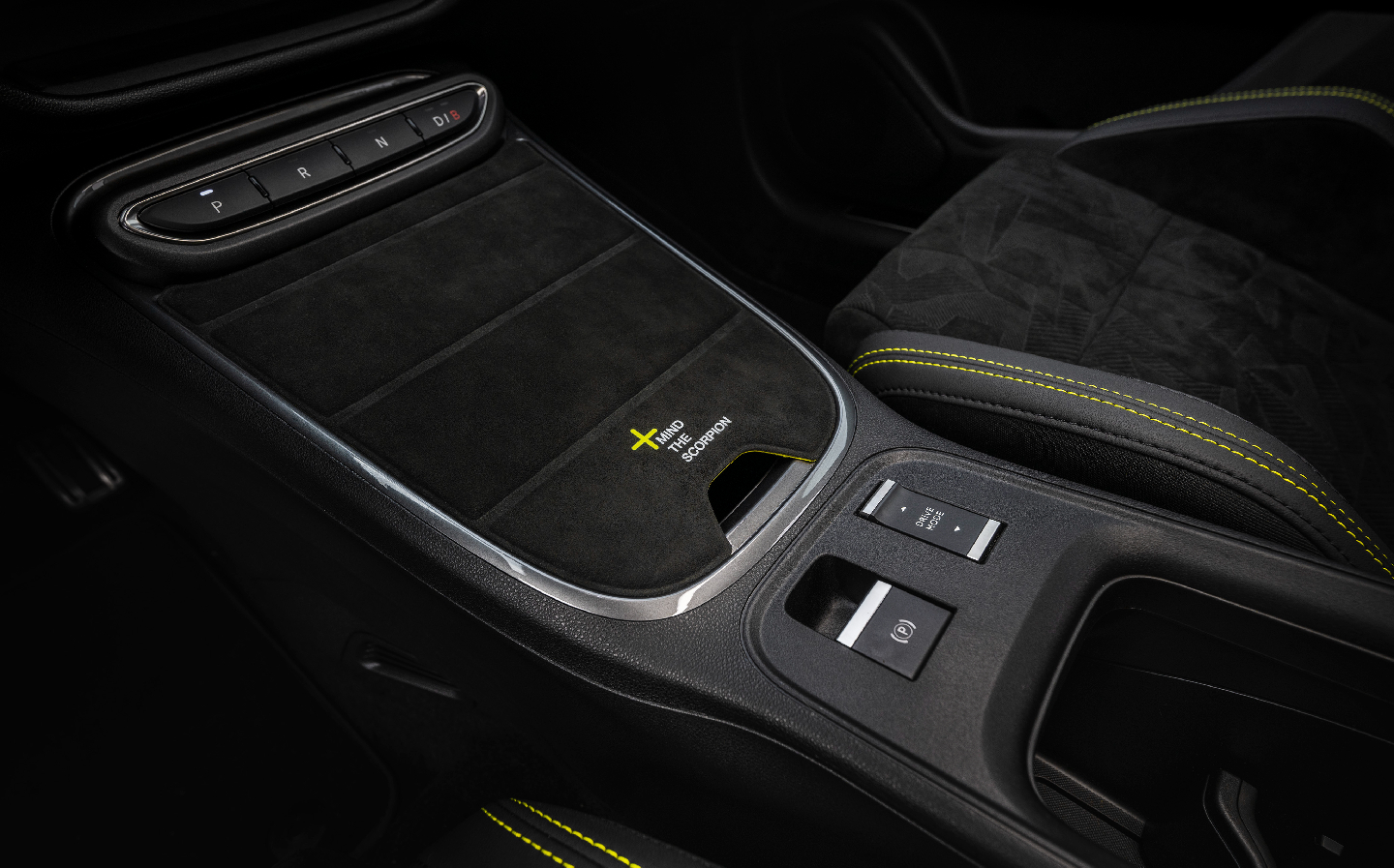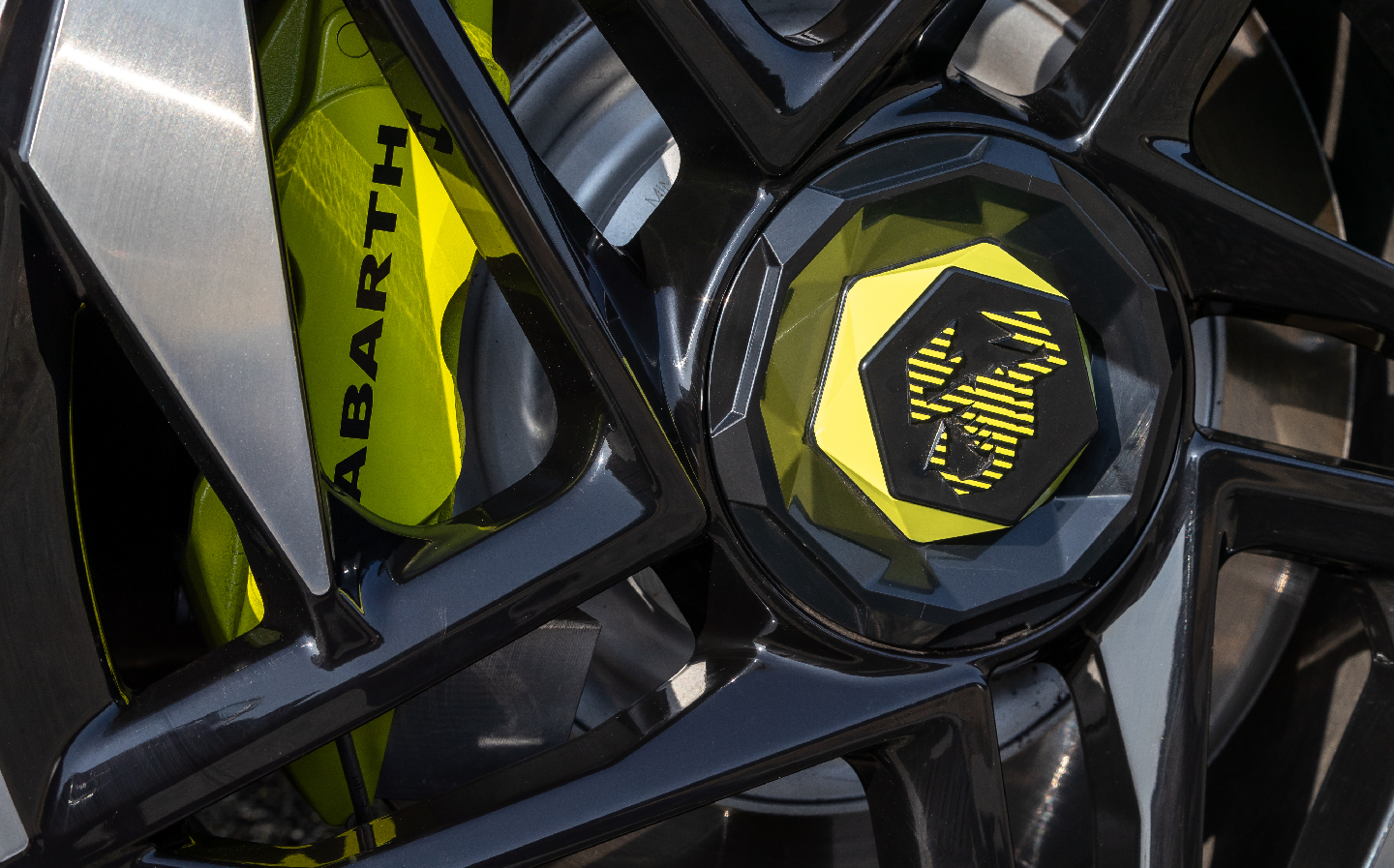Abarth 600e 2025 review: Another welcome hot hatch for the electric generation
Power doesn't corrupt after all
What makes a car good? That’s something I wrestle with every time I review a new vehicle, and it’s not something I’m entirely sure I can distil into a single concept. I can, however, tell you what doesn’t guarantee a car is good: power. If it did, the Hummer H2, with its 6-litre V8 that flatulated its way from 0-60mph in a full 10 seconds, would be exalted as one of the best cars ever made.
Which means that when Abarth proudly tells us the new 600e is “The most powerful Abarth ever”, we shouldn’t really give a damn. So what? It’s like saying the margarine we just bought is the yellowest ever. It’s a metric, yes, but ultimately rather meaningless.
But there’s still reason to be hopeful about this new electric family hot hatch. Those reading this will probably familiar with the Abarth name, but for the uninitiated it is a tuning firm that takes regular Fiat family cars and turns them into fierce little racing cars for the road. Carlos Abarth made his name tuning modest Italian cars to take on more powerful racers on track, in fact, and the firm now claims more than 10,000 race wins over its 75 year history. It also created terrific versions of road cars including the Ritmo 130TC, 695 Biposto and 124 Spider, to which I awarded five stars in 2017.
These days Abarth is having to turn its hand to the latest electric Fiats, and by its own admission this is irritating some of its most loyal fans. The thing is, and to paraphrase Abarth’s boss at the launch of the 600e, the company has no choice but to move with the times. By 2025, when Europe ends sales of new combustion-engined cars, Abarth must “be ready”, he told us.
So earlier this year Abarth applied its black magic to the Fiat 500e, creating a brilliantly fun — if slightly flawed (we’ll come to why below) — hot hatch, and now it has turned its attention to that car’s big sibling, the 600e.
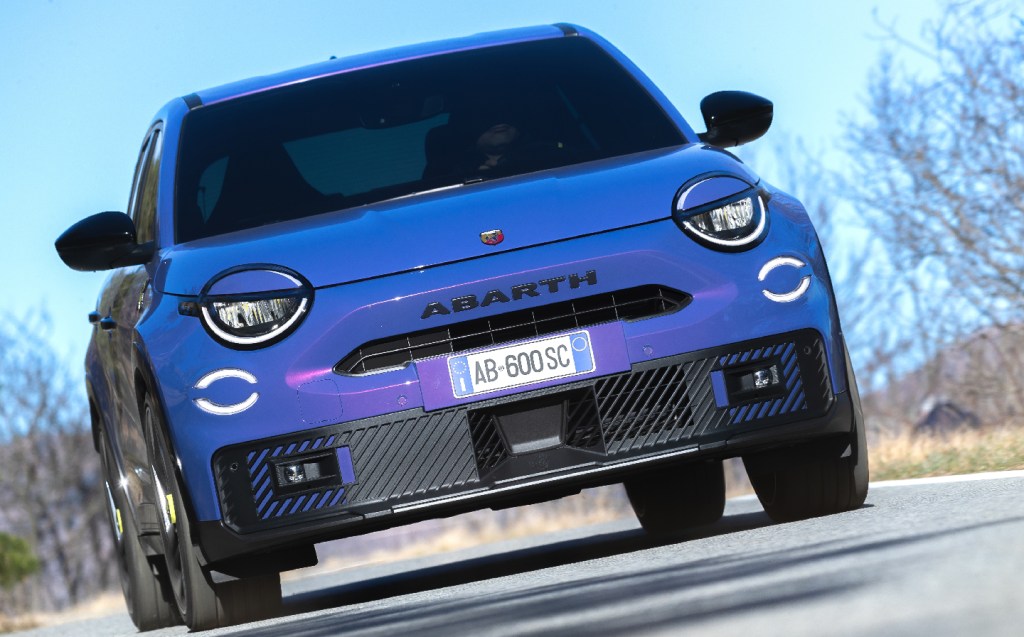
In doing so it borrowed from the Alfa Romeo Junior Veloce — both brands being part of the Stellantis Group — including the electric motor, battery pack, clever Torsen differential (which distributed power to each of the front wheels), and… well rather a lot besides. Abarth claimed a “specific motor, battery and chassis” at the launch, but that essentially means it ripped all the regular components out of the standard Fiat 600e before packing it with performance-focused parts. The fact that those parts are also found in the Junior Veloce was not mentioned.
And, while the funky 20in alloy wheels are their own unique design, incorporating scorpion sting shapes to remind us of the brand identity while also improving aerodynamic performance, if you look closely you’ll see they are shod with sticky Michelin EV tyres that are also on the Alfa.
Open the doors and the interior is very similar, too, with the drive mode rocker switch and electronic handbrake switch straight from the Stellantis parts bin, and the air conditioning controls identical to those of the Alfa. And versus the regular Fiat 600e, only the steering wheel, seats, pedals and instrument binnacle surround are unique.
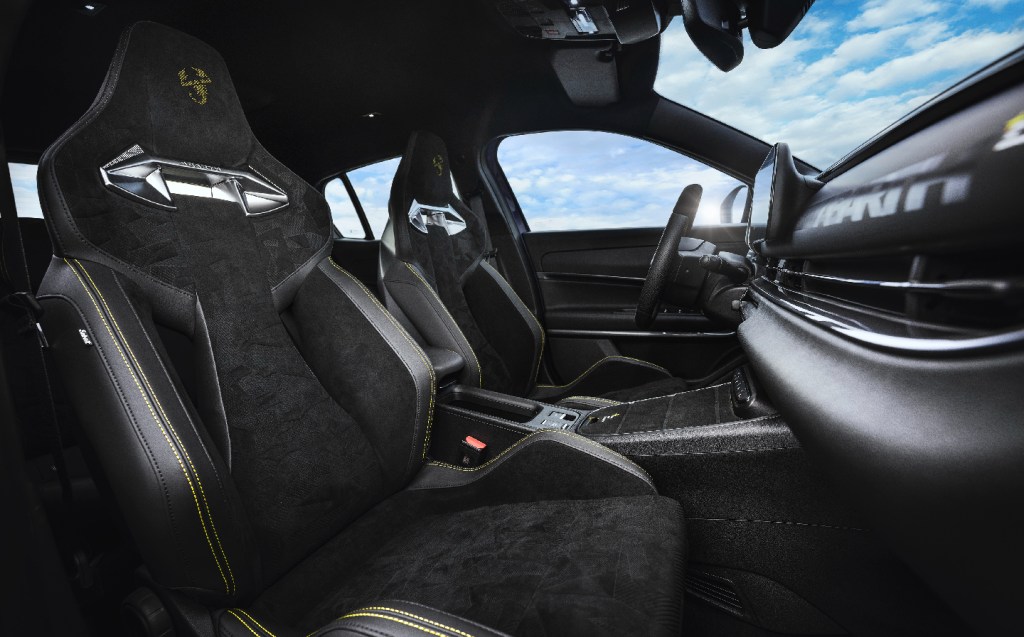
Don’t think I’m kicking the Abarth here; why have a car conglomerate if you can’t keep costs down through shared components? And actually, the 600e and Junior’s interiors work very well, mixing traditional physical switches and buttons with the modern touchscreen infotainment interface.
The sports seats in the 600e are also excellent, whichever of the two choices you get — a top notch mix of comfort and support, holding the driver and front passenger in place without feeling like a straitjacket, and it feels roomier inside the Abarth when compared with the Alfa, particularly in the back. One thing I really appreciated was the extra space in the pedal box, as the Junior’s isn’t designed for drivers with UK size 13s.
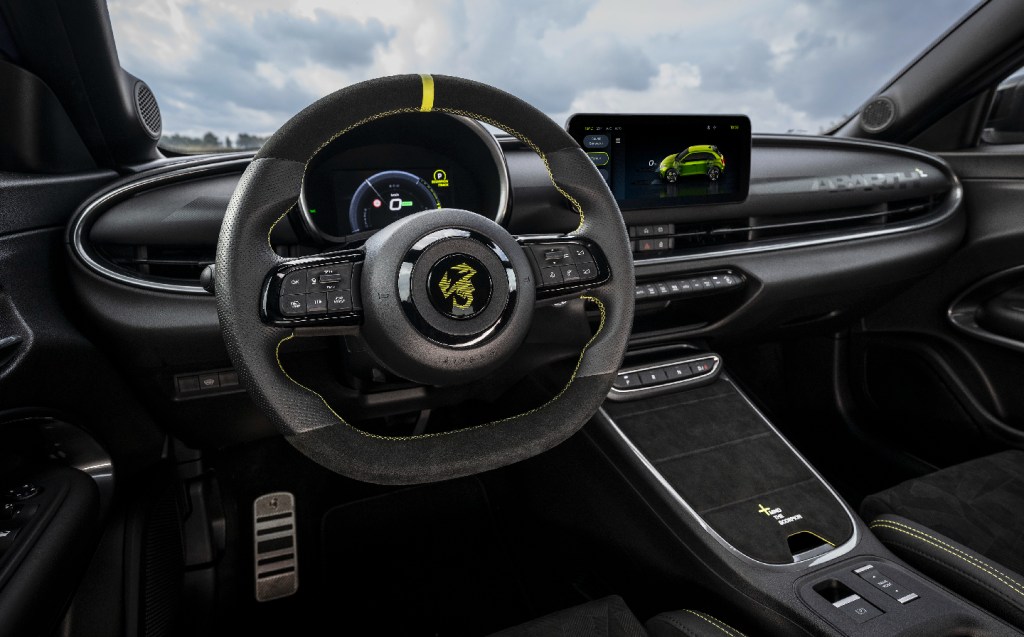
And to be fair to Abarth, the tuning of the chassis and suspension are bespoke for the 600e, so it and the Junior Veloce are not one and the same when it comes to the way they feel from behind the wheel.
Abarth said it challenged its engineers to come with with “the real Abarth feeling”, with a fully mechanical pedal feel and [spoiler] they cracked it. Our test involved a short and sedate road loop following a lead car, and this did little more than allow us to get a sense of the interior layout and ride quality… but that was revealing in its own way. Despite having 41 per cent stiffer suspension than the Fiat 600e, with a 25mm lower ride height and a new anti-roll bar that is 140 per cent stiffer, the ride isn’t at all what you could call harsh. This is not a toooth rattler. It’s also fairly well insulated from the outside world, I discovered, without undue wind or road noise.
Interestingly, whereas all Abarth 500e models get a noise generator that is, to my ears, utterly stupid (I mentioned that model is flawed) — pumping out fake engine sounds via a subwoofer below the car — that is only standard on the 278bhp range-topping 600e Scorpionissima model; the entry-level 600e Turismo, which has 237bhp, doesn’t come with it unless you tick a box on the order form.
What’s more, the sound it creates is much more appealing in the 600e, and begins to fade out as you venture over 50mph (much better for motorways). Even better, unlike with the Abarth 500e, it can be turned off easily via the touchscreen rather than through obscure submenu after obscure submenu on the digital drivers’ display. The product designers at Abarth definitely read our reviews.

When using motorways (and race tracks), the advertised range between charges of up to 208 miles for both the Turismo and Scorpionissima is obviously going to be wishful thinking. On track I saw as little as 2.3 miles per kWh (44.4kWh/100km), which means the 54kWh battery pack would be depleted in just over 120 miles. On the road, I saw a more reasonable 3.6 miles per kWh, which would result in a max range of 194 miles, and that could be improved if you’re careful, so on a mix of roads when the weather isn’t frosty (cold is not a battery’s friend) the official combined range is fairly accurate.
Charging takes a fairly standard 27 minutes from 20-80 per cent at the DC rapid charging rate of 100kW, or 5hr 45min using an 11kW home wallbox.
The way the car feels at pace became much clearer on Fiat’s Ballocco test track, with a high speed course and a twisty, undulating road-style route. Power output of 278bhp might not sound that much by today’s performance car standards but it’s plenty in a small EV and, while acceleration might not be as brutal as something like a Tesla Model 3 Performance it’s still good enough for a 0-62mph sprint in 5.9sec. That’s just a 10th of a second slower than a Honda Civic Type-R, and quicker than a petrol-powered Mini John Cooper Works. Which is probably going to keep most driving enthusiasts happy.
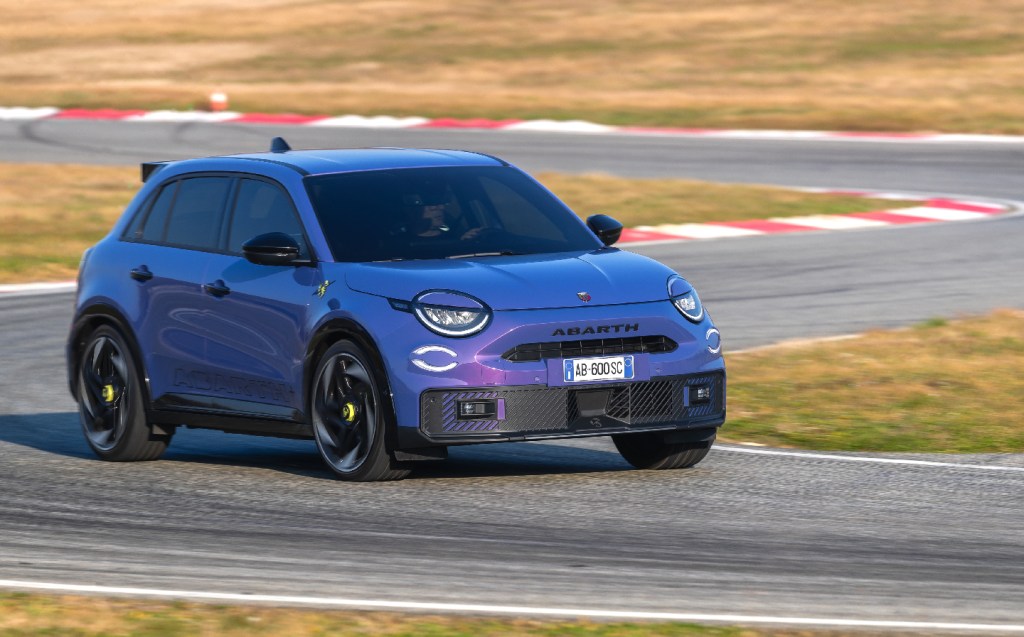
More important is that the pedal feel is natural — so often with electric cars, when planting the accelerator, especially while cornering, there’s a sudden dip in power as the wheels scrabble for grip and the stability control system works to stem wheelspin. It can be quite frustrating, as decent drivers don’t want the car to decide how much power is going to the wheels — that’s what their right foot is for. This is something that was sorted on the Junior Veloce and I’m pleased to say it’s also a part of the Abarth 600e’s character.
One of the other joys of the Alfa was its seemingly endless front end grip, and while the Abarth is slightly more au fait with the concept of understeer, it’s still reluctant to carry straight on when entering a corner unless the surface is particularly slippery. That means the 1.6-tonne Abarth 600e is a car you can fling into tight turns, even over crests, with great confidence at speeds beyond those that would trouble other less talented hot hatches.
The low centre of gravity and that more potent anti-roll bar, along with superbly-tuned steering, strong and consistent brakes, the Torsen diff and clever electronic stability control, result in a balanced and brilliant car on B-roads. So good, in fact that it may win over many of the Abarth traditionalists… and to prove it, the day after our test drives the Abarth enthusiasts’ club was due to arrive at Ballocco to find out for themselves.
Ultimately it is they who need to be impressed more than us journalists, as performance cars’ reputations are built from the core outwards. But I suspect Abarth’s loyalists will have discovered what I did: that this isn’t just the most powerful Abarth ever, it’s also engaging, responsive and, importantly, fun.
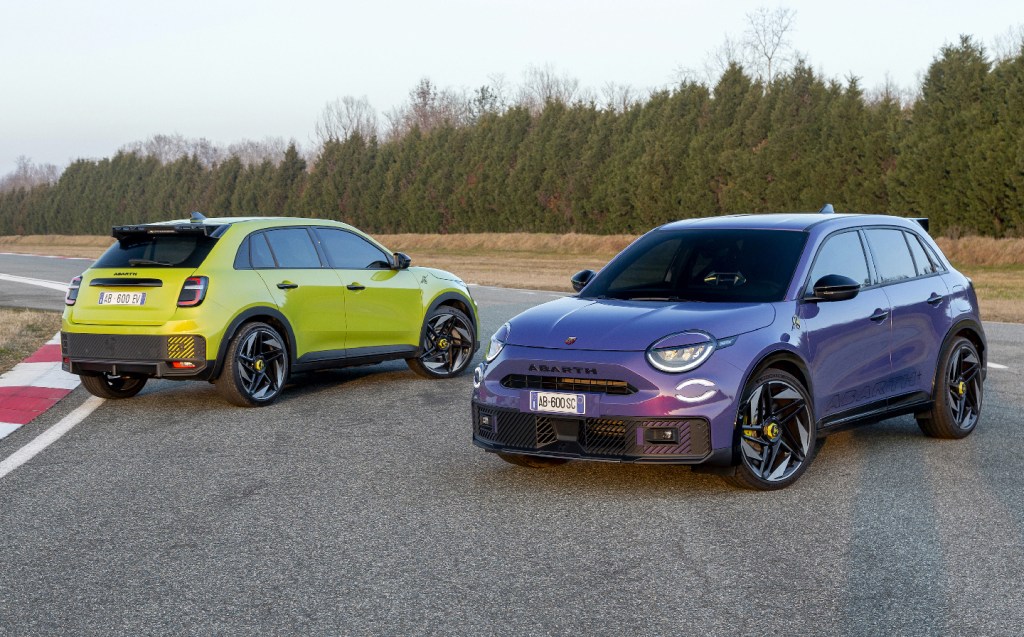
They may also notice that its prices — starting at £36,975 OTR for the Abarth 600e 237bhp Turismo, and rising to £41,975 for the Scorpionissima — are fairly competitive with what they might expect to pay for a similarly-powerful petrol hot hatch. And it’s worth noting that the highly-anticipated Alpine A290 has only 217bhp and costs somewhere between the two. That could be a massive own goal for the French rival.
Abarth aims to sell around 10 per cent of the total output of each vehicle it takes from Fiat, but with the 600e, given the base model’s lukewarm reception and the fact that the tuning house has, indeed, produced a “good car”, it may be looking at a larger share.
Related articles
- If you were interested in the Abarth 600e electric hot hatch, check out our review of a new rival, due in 2025: the Renault 5-based Alpine A290
- Don’t forget to check out what we said about the Alfa Romeo Junior Veloce
- And here’s our review of the little Abarth 500e
Latest articles
- Watch new Porsche 911 GT3 smash Nürburgring record for manual cars
- Skoda Elroq 2025 review: Czech carmaker can’t seem to miss with its electric family cars
- Five best electric cars to buy in 2025
- Should I buy a diesel car in 2025?
- F1 2025 calendar and race reports: The new Formula One season as it happens
- Zeekr 7X AWD 2025 review: A fast, spacious and high tech premium SUV — but someone call the chassis chief
- Denza Z9GT 2025 review: Flawed but sleek 1,062bhp shooting brake from BYD’s luxury arm
- Extended test: 2024 Renault Scenic E-Tech review
- Best-selling cars 2025: The UK’s ten most popular models of the year so far








